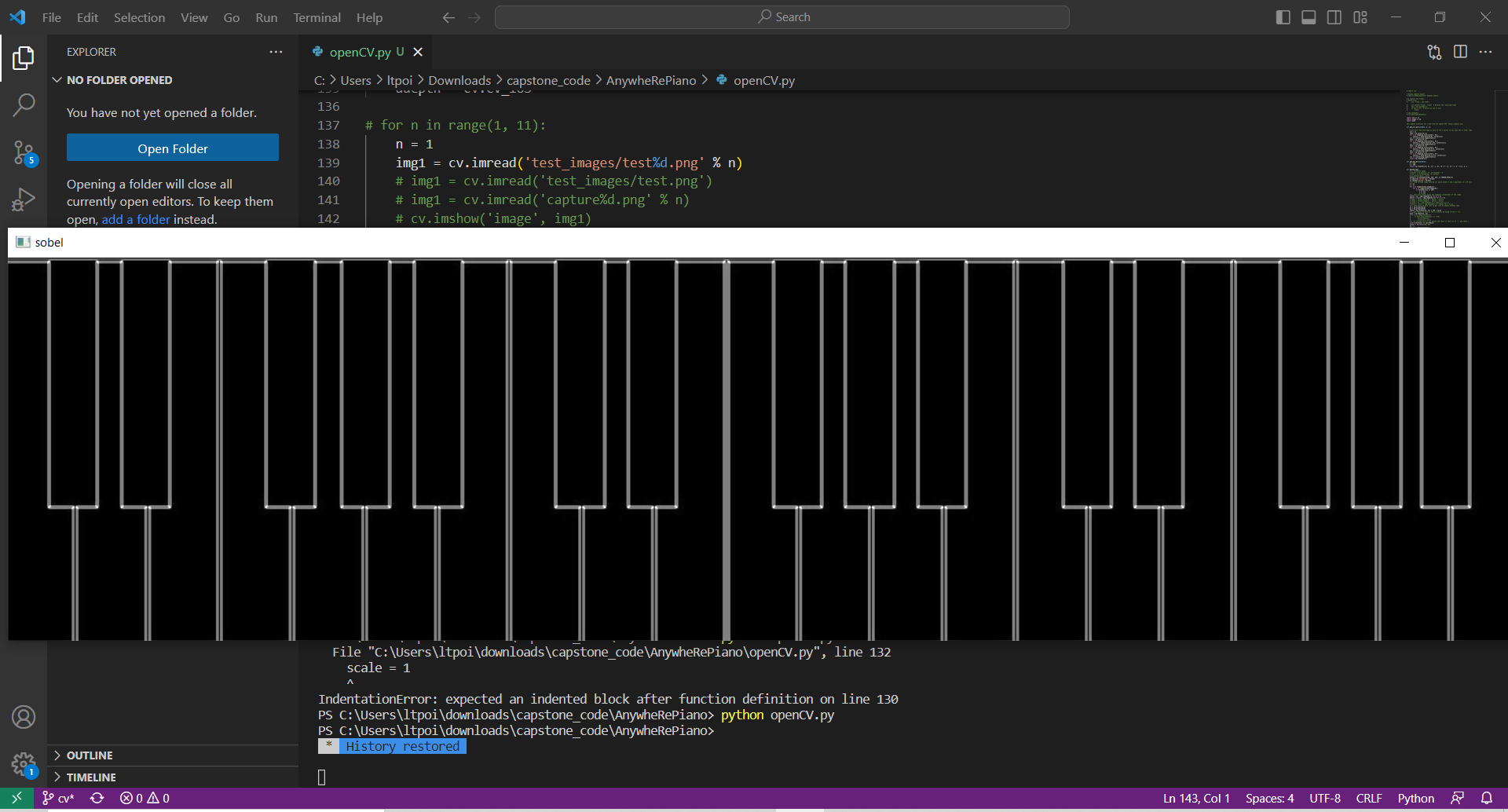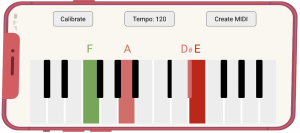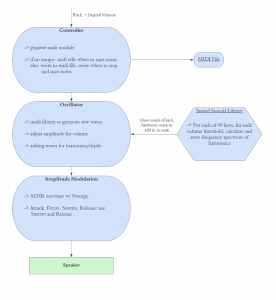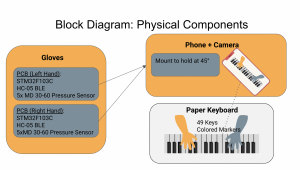What did you personally accomplish this week on the project? Give files or
photos that demonstrate your progress. Prove to the reader that you put sufficient effort into the project over the course of the week (12+ hours).
This past week I worked on the CV code to segment out black keys. I first started by obtaining test images from online that were just top down view to start off. Then, I created functions to input those test images from my hard drive to run the algorithms on them. I first started off with changing it to grayscale. Then I put a gaussian blur on it to prepare it for putting edge detection onto it. Lastly, I decided to put a sobel filter for horizontal and vertical edge detection to obtain the image below:

Furthermore, the camera attatchment for the laptop and phone came in and we put it on the laptop with the phone on it to see if it worked and it was able to point down at the direction we desired. We did not take a photo of it during class but an image of what this looks like can be found on the amazon store:

I also did some further research with finding out several ways to look at doing warp perspective since the view will not always be top-bottom view. I came up with 3 ideas. 1. Have the student choosing (clicking) points on the streaming video to choose where the piano is. 2. Use feature matching by passing in an image of the top-down view of the piano. 3. Add a red border so the CV algorithm recognizes the 4 corner points of the piano. After speaking with Tamal, he suggested changing the actual attachment itself to a goose neck, phone holder, tri-pod ring light mechanism. This would give it the flexibility to reach over and look down from a top-down view making our lives easier. Additionally, the ring light was a great suggestion since he said that lighting conditions could greatly affect the CV algorithm so it was importatnt to make this a control element rather than a variable. For corner points, he said red border would be best, or you even make the corners plus signs and just do feature matching for the plus signs to easily identify it. I will certainly take these into considerations.
Lastly, I worked on doingthe ethics assignment this week too. This includes reading through the two articles and completing tasks 1 and 2 of the assignment.
“ Is your progress on schedule or behind? If you are behind, what actions will be taken to catch up to the project schedule?
My progress is a bit behind as the black keys need to be segmented. However, all I need to do is put a binary threshold filter on it to filter out white vs black keys. Since we have edge detection achieved, I will use a segmentation function to add distinct values to the binary values of pixels and borders of the edge detection. So I will be working on that tomorrow before the start of the week on Monday.
“ What deliverables do you hope to complete in the next week?
By next week according to the schedule, I will have the white keys also segmented too. Additionally, I plan to have choose the goose neck phone holder ring light tri-pod amazon product on Monday during class to have it sent to the order form by Tuesday to get that in early. This will not stunt by progress since I am relying on test images still. I also will talk to my group mates on the task 3 of the ethics assignment where we discuss that and take ntoes. I also want to work on adding the corner point plus signs to the test images to see how well the warp perspective performance will do.











